Call Us
Send Us A Message
Get a Quote
There is a 100 piece minimum to work with a sales rep.
Screen Printing: 25 pieces minimum
Embroidery: 3 pieces minimum
Water-based Transfers: 1 pieces minimum
Direct-To-Garment: 1 pieces minimum
Patches: 25 pieces minimum
Office: (323) 261-8700
9 AM - 5:30 PM PST
Chat Available 9 AM - 2 AM PST
Back
Your dedicated account rep is here to keep you updated and offer real time suggestions and project navigation every step of the way. Online ordering and live price quotes available here.
This will help us tailor the experience depending on your experience and know how to best support you.
Select one or as many of the services below you are interested in.
If you need help to identify the correct product for the correct demographic at the correct price point, select "I need help searching" and we will ask you a few additional questions to allow us to submit the best options for your project.
We want to make sure your recipients will love and wear the merch you create time and time again. These questions will really help us identify the products that will best fit your audience.
Please make sure that you have reached minimum order quantity for preferred option. MOQ descriptions you can find
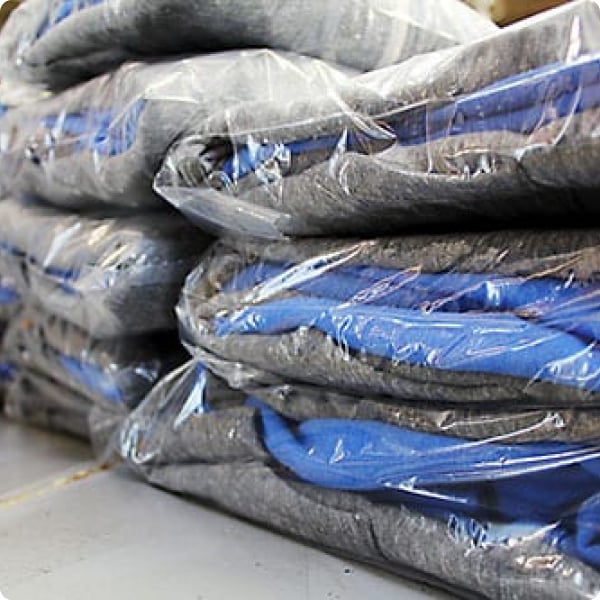
DTLA Print has an in house finishing department in its facility with trained individuals to professionally fold and bag your garments. Bags can be provided with customizable options, however we use a 1 mill flat poly bag which can be air sealed or taped shut.
$0.95/Shirt
+ 2 days
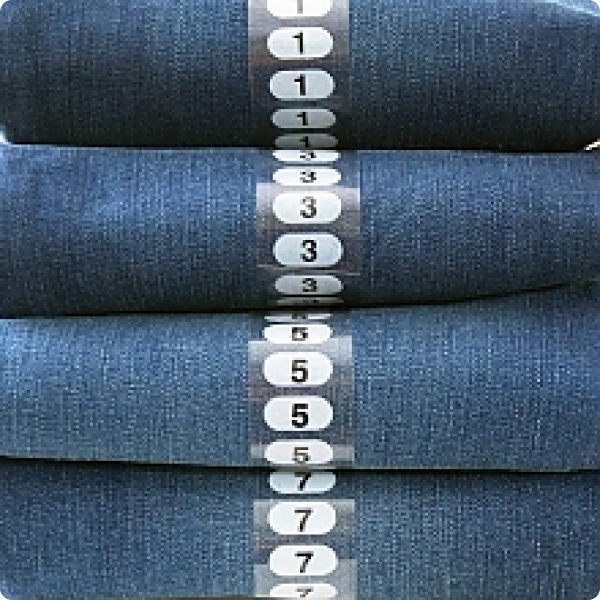
Add a size sticker to the outside of each garment or poly bag to easily identify the size of a garment. Packages do come separated by size how ever many retailers and fulfillment centers do require these stickers.
$0.65/Shirt
+ 2 days
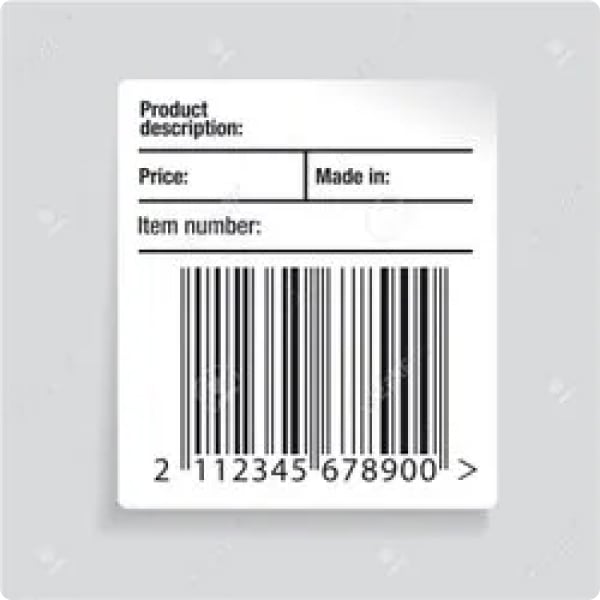
We will print & apply a custom UPC label for any retailer, 3rd party logistics or fulfillment partner you work with.
$0.75/Shirt
+ 2 days
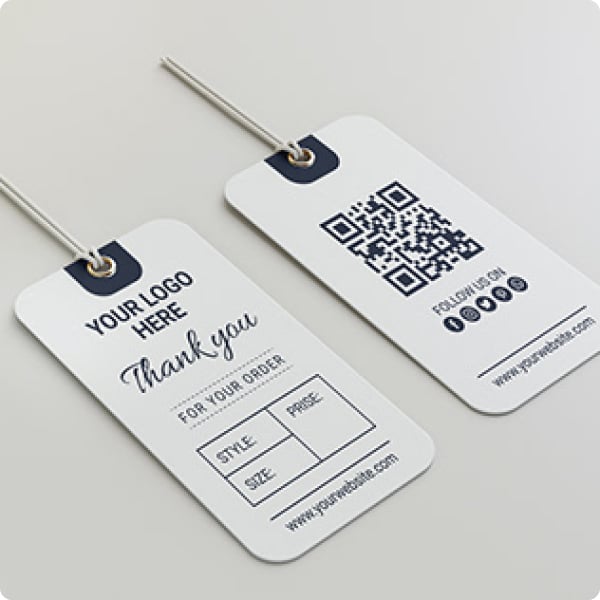
Incorporating price tickets and hang tags securely with a pin, while offering a diverse array of sizes, colors, and finishes, significantly enhances the perceived quality and overall appeal of your garment. Additionally, not only elevate the garment’s perceived value but also provide essential product information, giving your customers a more informed and satisfying shopping experience.
$1.8/Shirt
+ 14 days
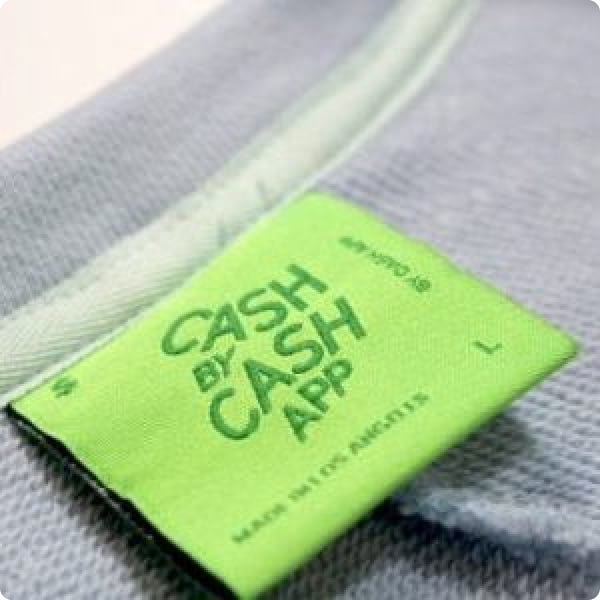
Create a fully custom woven main label. Includes the actual label itself and the sewing of the label. We will reach out to discuss the woven label material choices, shapes, and design. Please note this does add extra business days to the production time.
$2.75/Shirt
+ 14 days
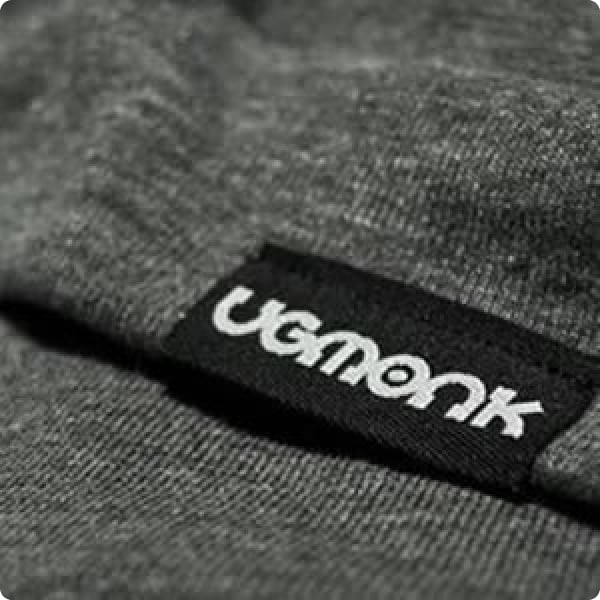
Create a fully custom woven hem label. Similar to the main label, this includes the actual label itself and the sewing of the label. We will reach out to discuss the woven label material choices, shapes, and design. Please note this does add extra business days to the production time. Hem labels go anywhere except the neck label of a garment.
$1.85/Shirt
+ 14 days
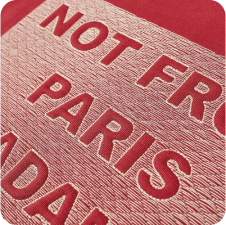
4.5” W but larger can be requested
Not common, but possible
PSD, AI, PDF, EPS, PNG
12
Metallic & 3D Puff
Scaled to size or larger with transparent background
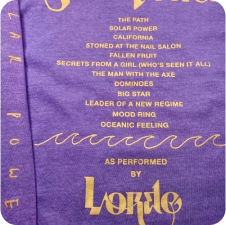
3” - 12” depending on location
15x18” *special request
PSD, AI, PDF, EPS, PNG
8
3M Reflective, Water-based, Plastisol, Puff, Etc...
Scaled to size or larger with transparent background
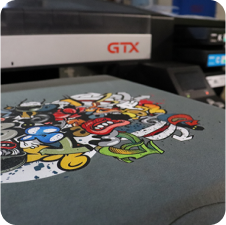
15x18”
PNG preferred, ( also acceptable; PSD, AI, PDF, EPS, JPG )
Unlimited
300 DPI scaled to size or larger with a transparent background
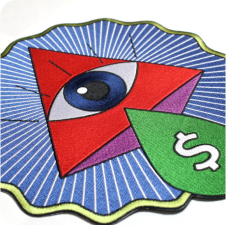
10x13.5”
PNG preferred, ( also acceptable; PSD, AI, PDF, EPS, JPG )
Unlimited
300 DPI scaled to size or larger with a transparent background
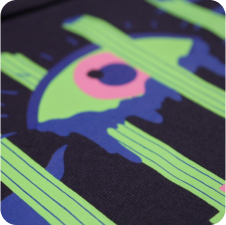
15x18”
PNG preferred, ( also acceptable; PSD, AI, PDF, EPS, JPG )
Unlimited
300 DPI scaled to size or larger with a transparent background
Upload Mockups
Don’t worry! Every order is triple checked even if it does not look perfect in this demo.
Max File Size: 15 MB. For any files larger than 15MB please send via wetransfer.com or dropbox.com and share with sales@dtlaprint.com
Tax exemption is the reduction or removal of a liability to make a compulsory payment that would otherwise be imposed by a ruling power upon persons, property, income, or transactions. Tax-exempt status may provide complete relief from taxes, reduced rates, or tax on only a portion of items. Examples include exemption of charitable organizations from property taxes and income taxes, veterans, and certain cross-border or multi-jurisdictional scenarios.
*Only orders shipped with in California are charged tax unless a a valid CA resale form is provided.
Production time is separate from shipping
If you're in a hurry to receive your order, we offer an expedited service to fast-track the production process. While this option incurs additional charges, it ensures you get your product sooner. However, if time is not a pressing concern, you can stick to our standard production schedule at no extra cost. We believe in providing you with the flexibility to choose the timeline that best suits your needs.
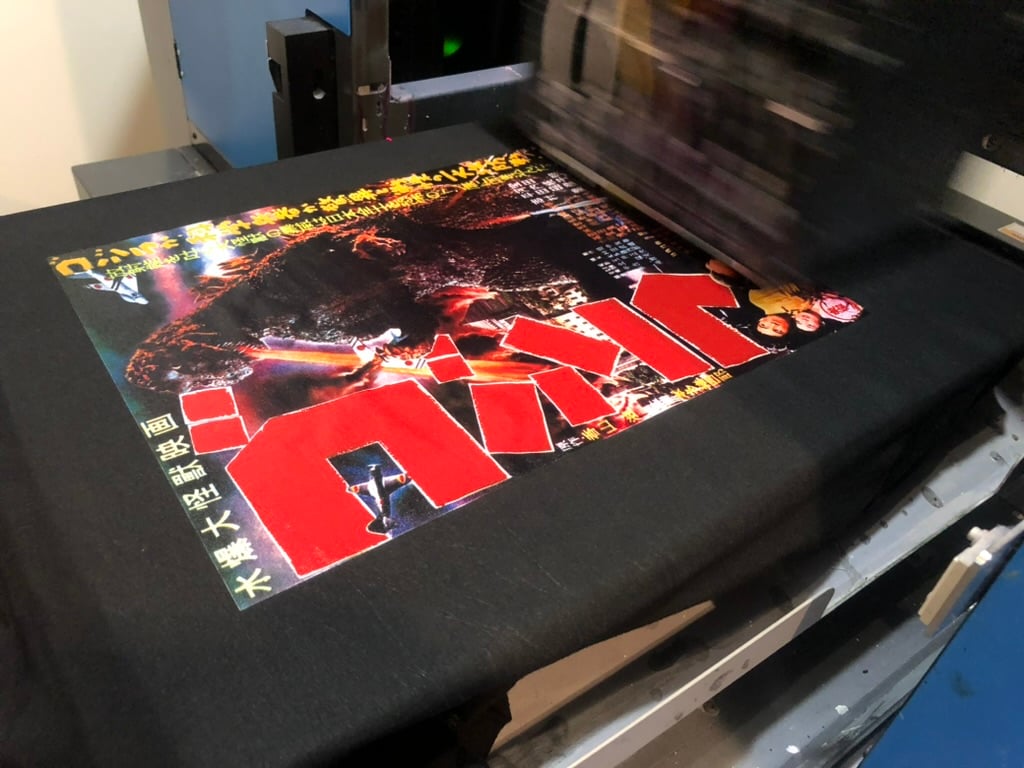
Custom t shirt printing methods have evolved significantly over the years, offering a plethora of techniques to choose from, each with its unique advantages and applications. Whether you’re a small business owner looking to create custom merchandise or part of a large corporation seeking branded apparel, understanding the different printing methods can help you make an informed decision.
This guide will delve into various shirt printing techniques, examining their processes, benefits, and ideal use cases.
Screen printing, also known as silkscreen printing, involves creating a stencil (or screen) and using it to apply layers of ink on the t-shirt. This t-shirt printing method is one of the oldest and most popular in the industry due to its versatility and durability.
The process starts by creating a stencil on a fine mesh screen. Ink is then spread over the screen, and a squeegee is used to press the ink through the mesh onto the fabric below, leaving the design on the t-shirt. Each color in the design requires a separate screen and layer of ink.

Screen shirt printing is best suited for bulk custom t shirts orders and simple designs with limited colors. It’s a great choice for team shirts, promotional t-shirts, and any situation where durability is crucial.
DTG printing uses a specialized inkjet printer to apply ink directly onto the fabric. This fabric printing technique allows for detailed and colorful designs, making it a popular choice for custom t-shirts with intricate graphics.
The process involves pre-treating the t-shirt to help the ink bond with the fabric, then using a direct to garment t shirt printer to print the design directly onto the t-shirt. The ink is absorbed by the fibers of the fabric, resulting in a soft, durable print.
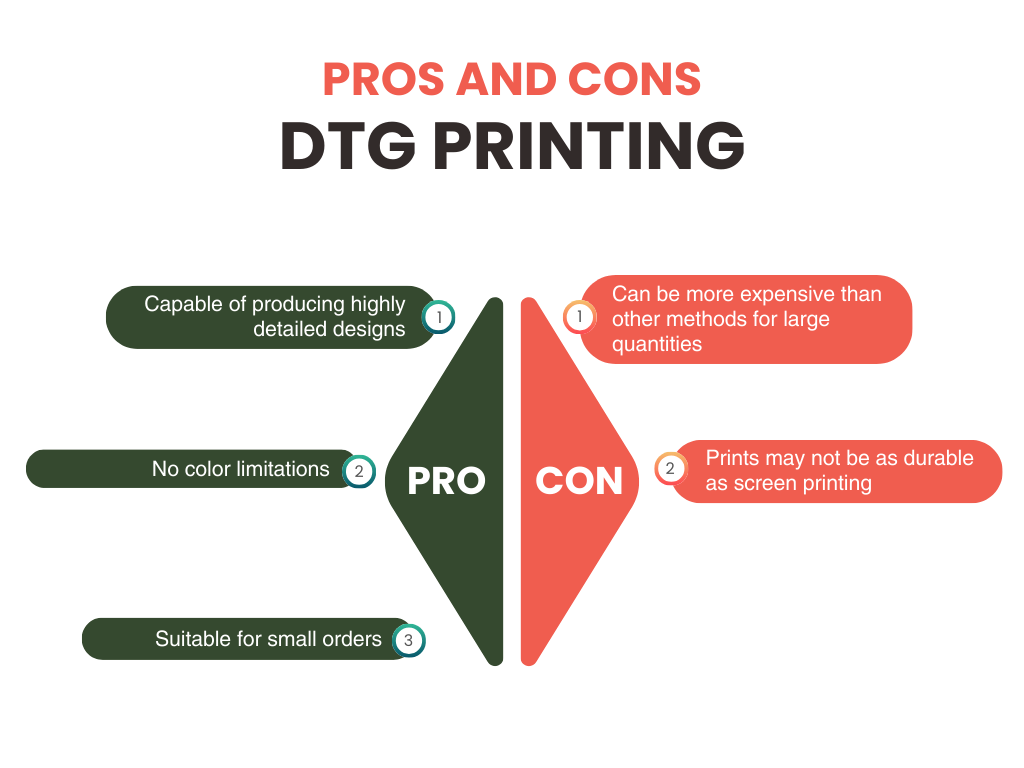
DTG printing is ideal for small orders, complex designs, and when a quick turnaround is needed. It’s perfect for personalized gifts, niche markets, and small business offerings.
Heat transfer printing involves printing a design onto special transfer paper and then using heat and pressure to transfer the design onto the custom t-shirt. This garment printing method can produce high-quality images and is relatively easy to set up.
The design is printed onto the transfer paper using a standard or specialized printer. The transfer paper is then placed on the t-shirt, and a heat press is used to transfer the ink from the paper to the fabric, creating the final print.
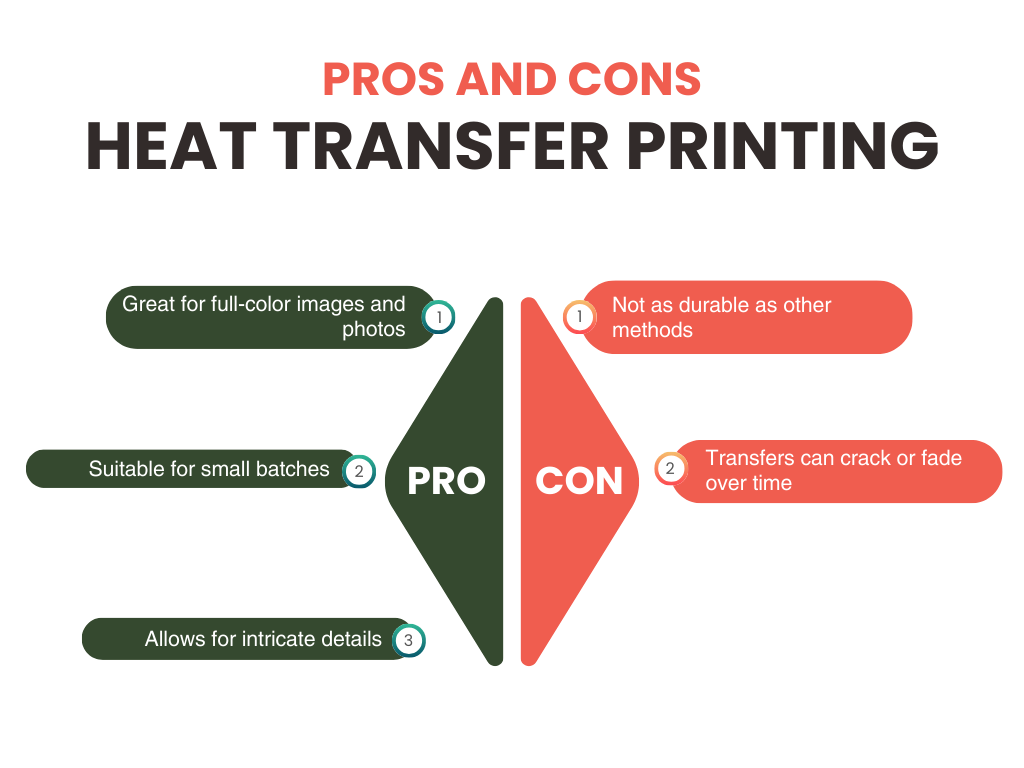
Heat transfer printing is best for custom made t shirts that require full-color images, such as photos. It’s often used for creating promotional items, company swag at events, and personalized gifts.
Sublimation printing uses heat to transfer dye onto fabric. This t shirt printing method works best on polyester fabrics and produces vibrant, long-lasting prints that are embedded into the fabric rather than sitting on top of it.
The process involves printing the design onto sublimation paper with special sublimation inks. The paper is then placed on the t-shirt and heated, causing the dye to turn into gas and bond with the polyester fibers.
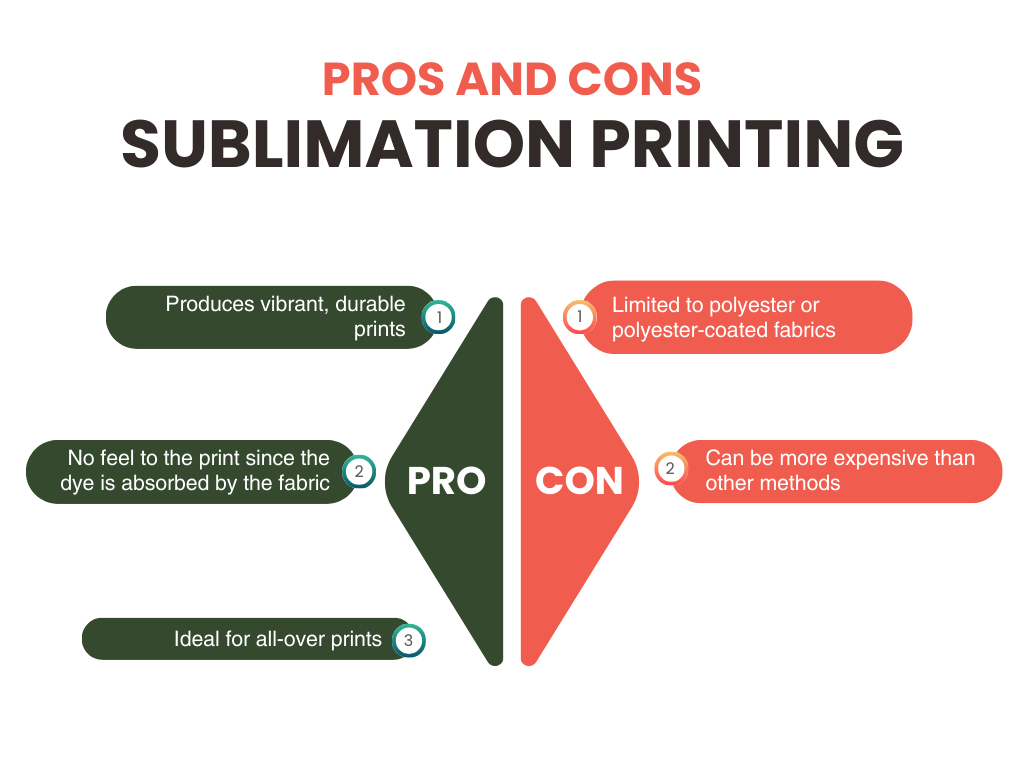
Sublimation printing is perfect for sportswear, corporate gifts for employees, and any design that requires a vibrant, all-over print. It’s especially popular for creating custom jerseys and activewear.
Vinyl cutting involves cutting designs out of colored vinyl sheets and then heat pressing them onto the custom t shirts. This shirt printing technique is known for its durability and ability to produce crisp, clean lines.
The design is created using a digital cutter, which cuts the vinyl according to the design specifications. The excess vinyl is weeded away, leaving only the design. The design is then heat pressed onto the t-shirt.
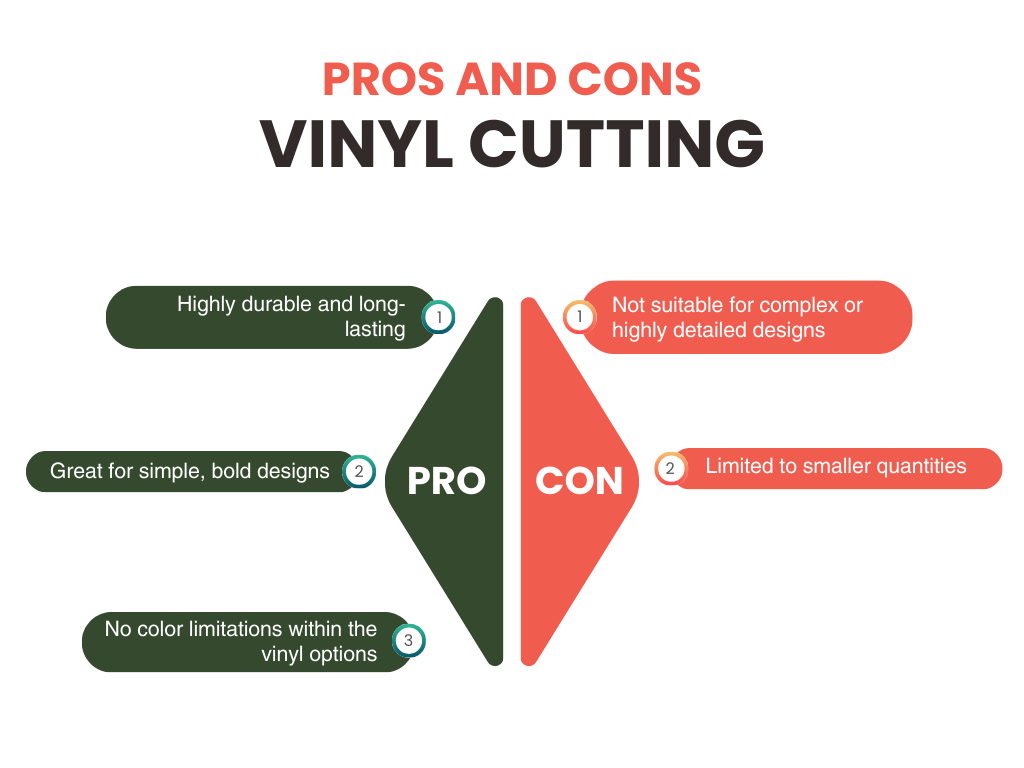
Vinyl cutting is ideal for bold, simple designs such as numbers, letters, and logos. It’s commonly used for sports jerseys, team uniforms, and promotional items.
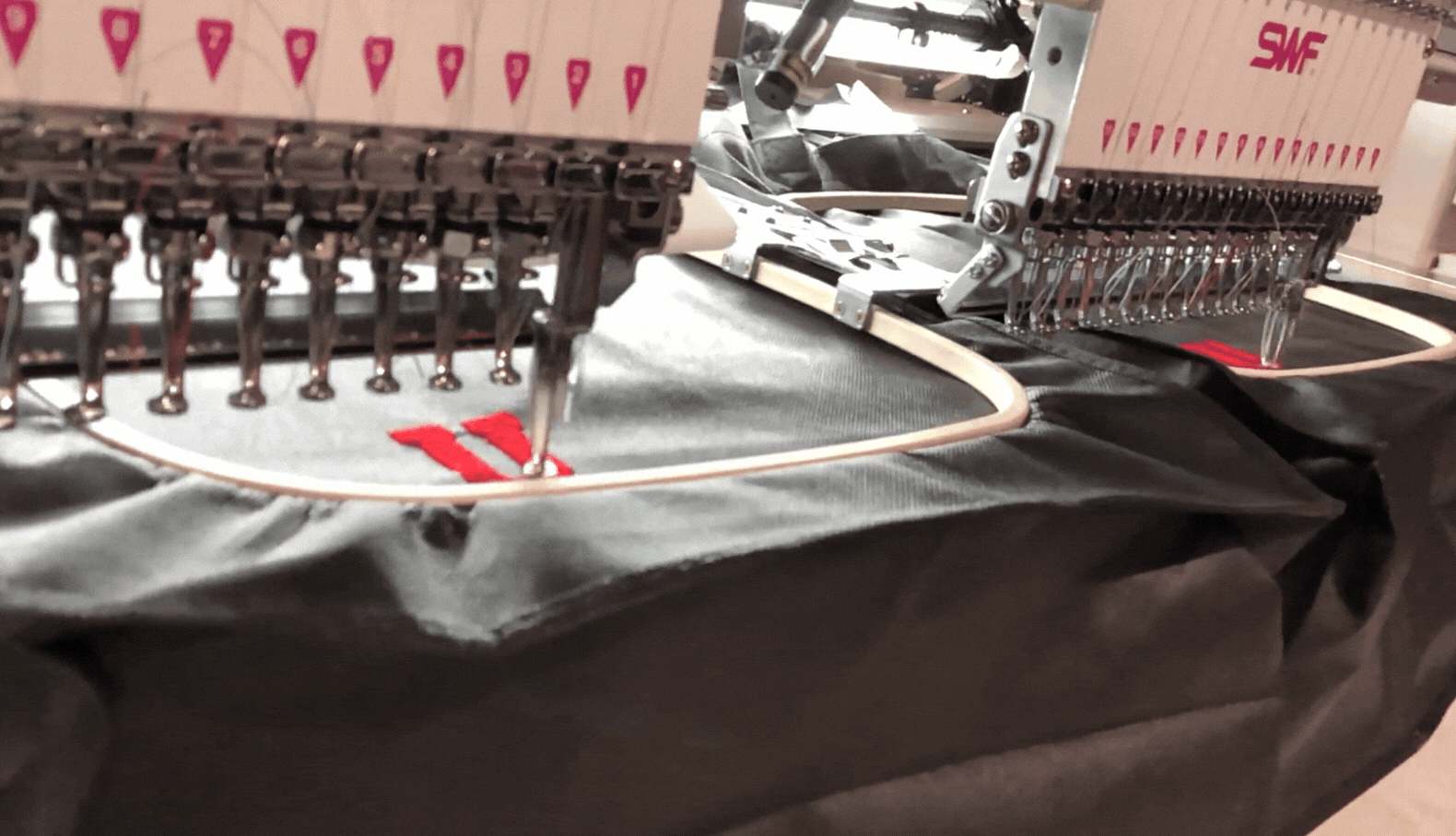
Embroidery involves stitching designs directly onto the fabric using threads. This t-shirt printing method provides a textured, high-quality finish that is both durable and visually appealing.
The process begins with digitizing the design, converting it into a format that embroidery machines can read. The machine then stitches the design onto the t-shirt, using various thread colors to create the final product.
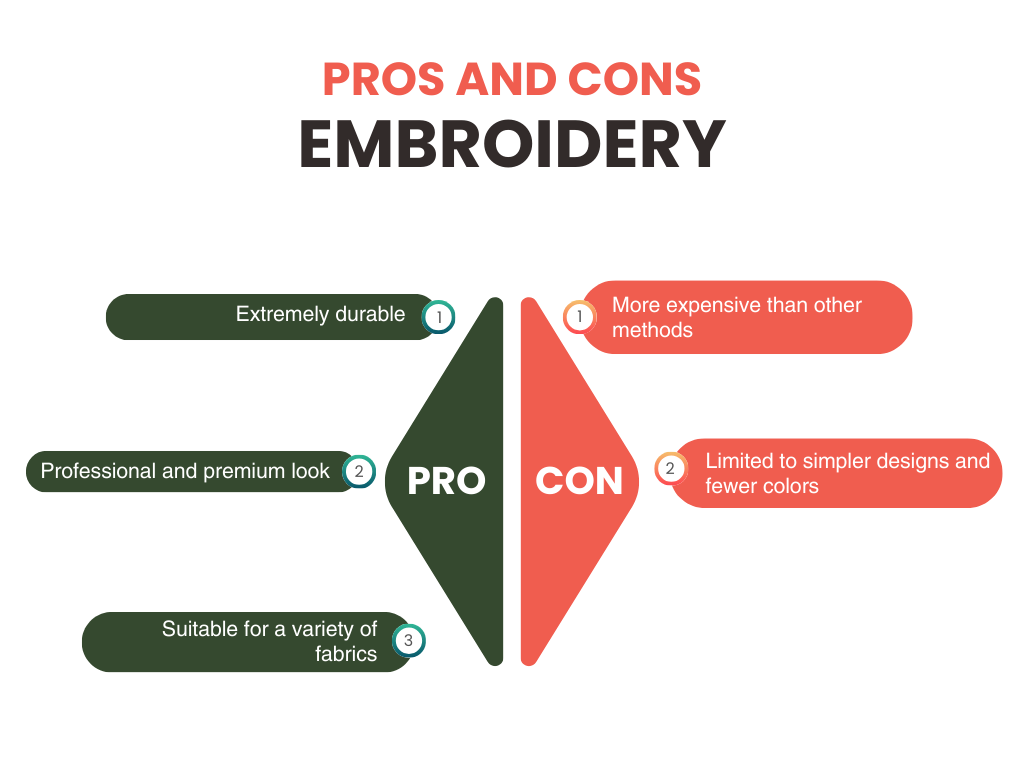
Embroidery is best for creating professional and high-end apparel, such as corporate uniforms, branded apparel, and company swag. It’s also popular for hats, bags, and jackets.
Dye-sublimation printing is similar to sublimation printing but focuses on transferring dye into the fabric itself, creating vibrant and long-lasting prints. This garment printing method is ideal for detailed designs and large, colorful images.
The process involves printing the design onto sublimation paper with special inks. The paper is then placed on the t-shirt and heated, causing the dye to turn into gas and bond with the fibers.
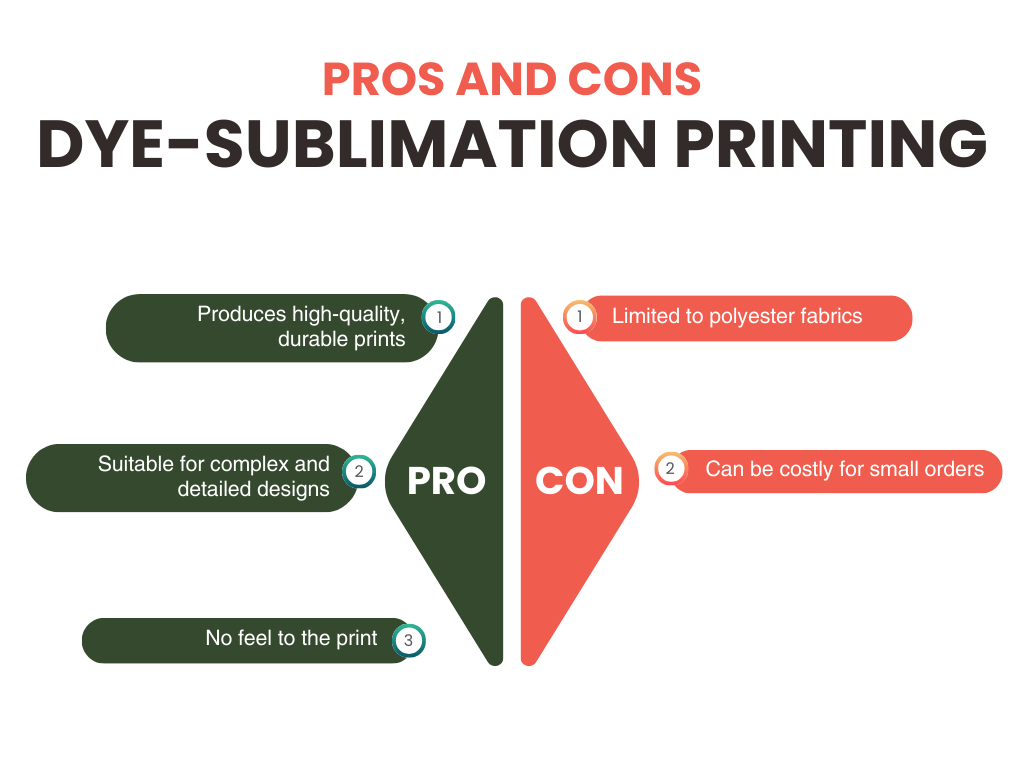
Dye-sublimation printing is great for creating detailed and vibrant designs on polyester fabrics. It’s often used for sportswear, promotional items, and custom apparel with intricate graphics.
Discharge printing involves using a discharge agent to remove the dye from the fabric, leaving a natural color in its place. This fabric printing technique can produce soft prints with a vintage look and feel.
The process starts with applying a discharge ink mixed with an activator to the fabric. The ink removes the existing dye, and heat is applied to activate the discharge process, resulting in a soft, vintage-style print.
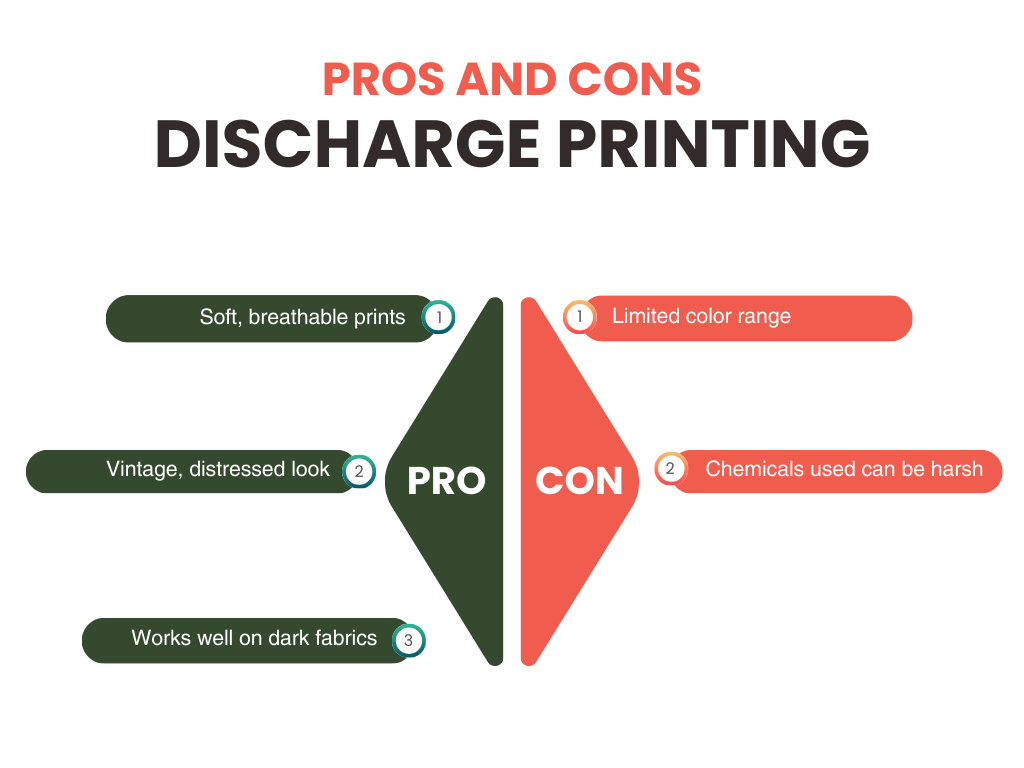
Discharge printing is ideal for creating vintage-style custom shirts with a soft feel. It’s often used for fashion-forward brands and branded apparel with a distressed look.
Plastisol transfers involve printing a design onto special transfer paper using plastisol ink and then heat pressing it onto the t-shirt. This t-shirt printing method combines the durability of screen printing with the flexibility of transfers.
The process starts with screen printing the design onto the transfer paper using plastisol ink. The transfer is then heat pressed onto the t-shirt, bonding the ink to the fabric.
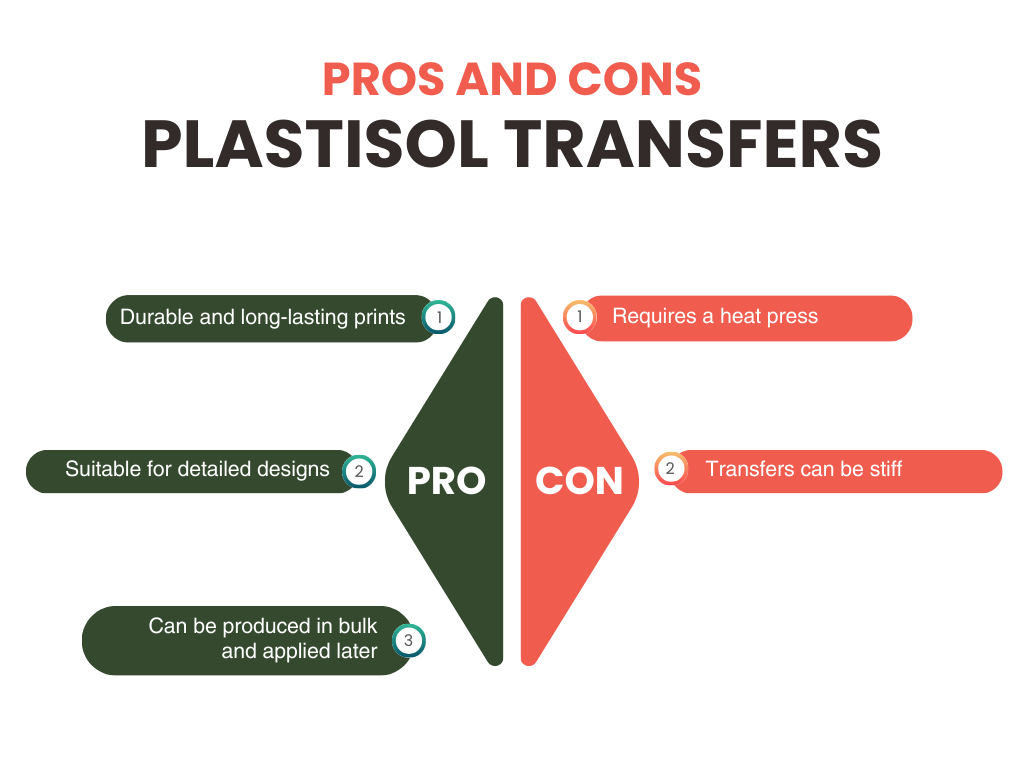
Plastisol transfers are best for creating durable and detailed designs, particularly when you need the flexibility to apply transfers at a later time. It’s commonly used for promotional items and custom merchandise.
Puff printing involves using a special ink that expands when heated, creating a raised, textured effect on the t-shirt. This shirt printing technique adds a unique, three-dimensional look to designs.
The process starts with screen printing a design using puff ink. When the ink is heated, it expands and rises, creating a puffy, textured finish.
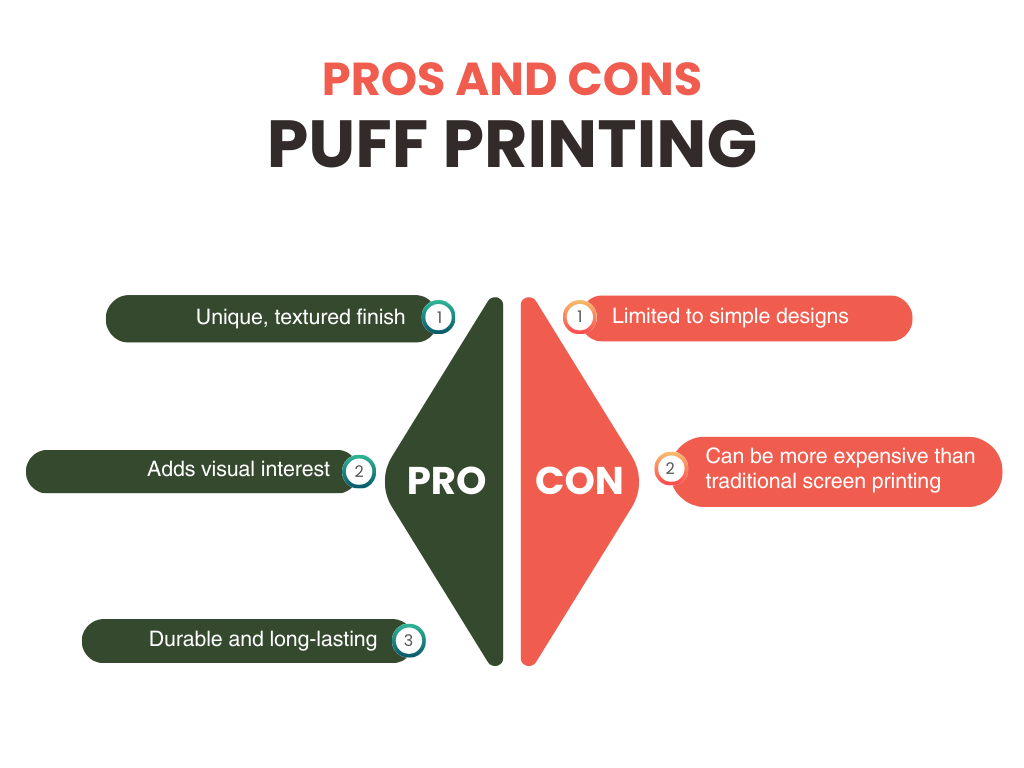
Puff printing is ideal for adding a unique, tactile element to designs. It’s often used for fashion-forward brands and custom apparel that aims to stand out.
Foil printing involves applying a layer of adhesive to the t-shirt, which is then covered with a thin layer of metallic foil. The result is a shiny, eye-catching design that stands out.
The process starts with screen printing an adhesive onto the t-shirt. The foil is then applied over the adhesive, and heat and pressure are used to bond the foil to the fabric.

Foil printing is perfect for adding a metallic, reflective effect to designs. It’s often used for fashion apparel, special events, and promotional items.
Flock printing involves applying a layer of adhesive to the t-shirt and then covering it with small fibers (flock) to create a soft, velvety texture. This garment printing method adds a tactile element to designs.
The process starts with screen printing an adhesive onto the t-shirt. Flock fibers are then applied over the adhesive, and heat and pressure are used to bond the fibers to the fabric.
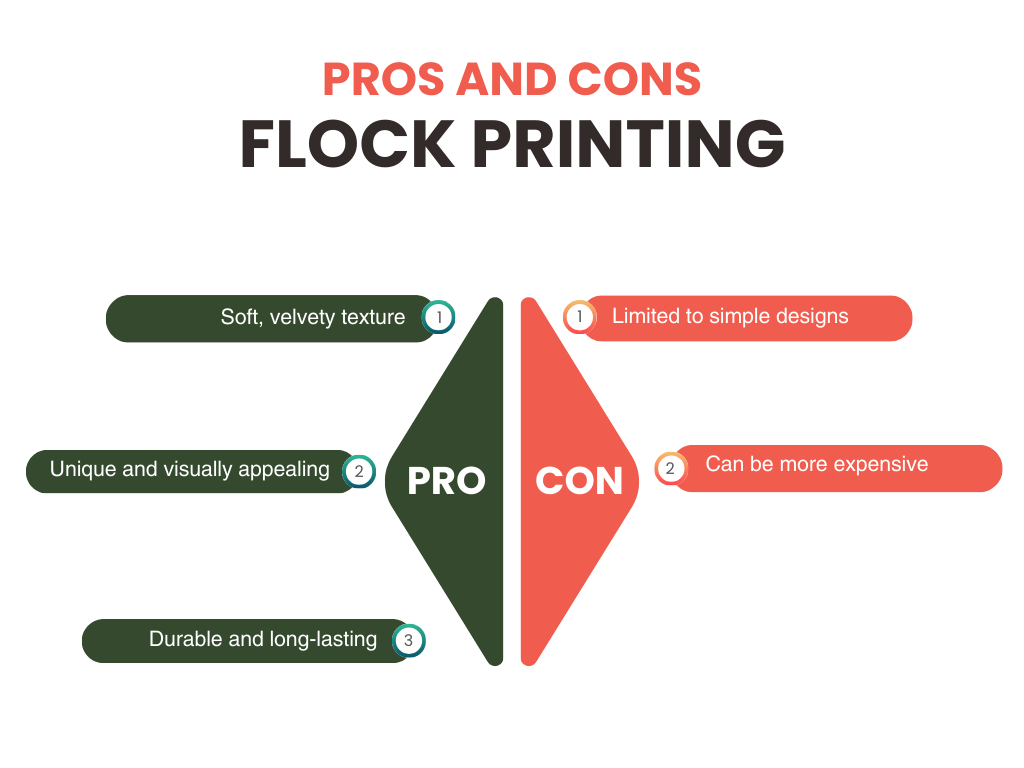
Flock printing is ideal for creating unique, textured designs. It’s often used for branded apparel, promotional items, and custom merchandise that aims to stand out.
When choosing a garment printing method, consider factors such as design complexity, order quantity, budget, and the desired finish. Each method has its strengths and weaknesses, so selecting the right one depends on your specific needs.
Cost considerations include setup fees, material costs, and production times. Screen printing is generally more cost-effective for large orders, while DTG and heat transfer are better for small quantities.
Durability varies across printing methods, with screen printing, embroidery, and vinyl cutting offering the most long-lasting results. Consider the intended use of the t-shirts when evaluating durability needs.
Using sustainable inks, such as water-based or eco-friendly plastisol, can reduce environmental impact. These inks are non-toxic and biodegradable, making them a safer choice for both the environment and the wearer.
Many shirt printing methods have initiatives to reduce waste, such as using efficient production techniques and repurposing leftover materials. This approach promotes a more sustainable production model.
Energy-efficient machinery and renewable energy sources can significantly lower the carbon footprint of t shirt printing. Choosing a provider that prioritizes energy efficiency supports sustainable practices.
Selecting the right colors is crucial for a successful t-shirt design. Consider your brand’s color palette and how different printing methods affect color vibrancy and durability.
The placement of your design on the t-shirt impacts its visual appeal. Common placements include the chest, back, sleeves, and all-over prints. Choose a placement that best suits your design and branding goals.
Ensure your design is appropriately sized for the t-shirt. Consider different t-shirt sizes and how the design will look on each. Providing multiple size options ensures a better fit for all wearers.
Avoid common design errors such as low-resolution images, poor color choices, and incorrect sizing. Ensuring your design is print-ready can save time and money.
Choosing the wrong material for your t shirt printing method can lead to poor results. Ensure the fabric is compatible with the selected printing technique for optimal outcomes.
Using incorrect settings during the printing process can result in subpar prints. Work with experienced professionals who understand the nuances of each method.
Advances in technology continue to shape the t-shirt printing industry. Innovations such as 3D printing, automated processes, and enhanced software tools are making custom shirt printing more accessible and efficient.
Sustainability remains a significant trend, with more businesses seeking eco-friendly printing options. From sustainable inks to energy-efficient practices, the industry is moving towards greener solutions.
The demand for custom t-shirts shows no signs of slowing down. As businesses and consumers seek unique, personalized apparel, the market for t-shirt printing continues to grow.
Choosing the right t-shirt printing method can significantly impact the success of your custom apparel project. Whether you prioritize durability, detail, or eco-friendliness, understanding the strengths and weaknesses of each method will help you make an informed decision. Learn more about these printing techniques and find the perfect solution for your needs.
In partnership with onetreeplanted.org
In partnership with onetreeplanted.org
Please provide the best contact number for our team to reach out to you on, your account rep will reach out within 24-48 business hours.
A 100 piece minimum is needed for an account rep to handle your order.